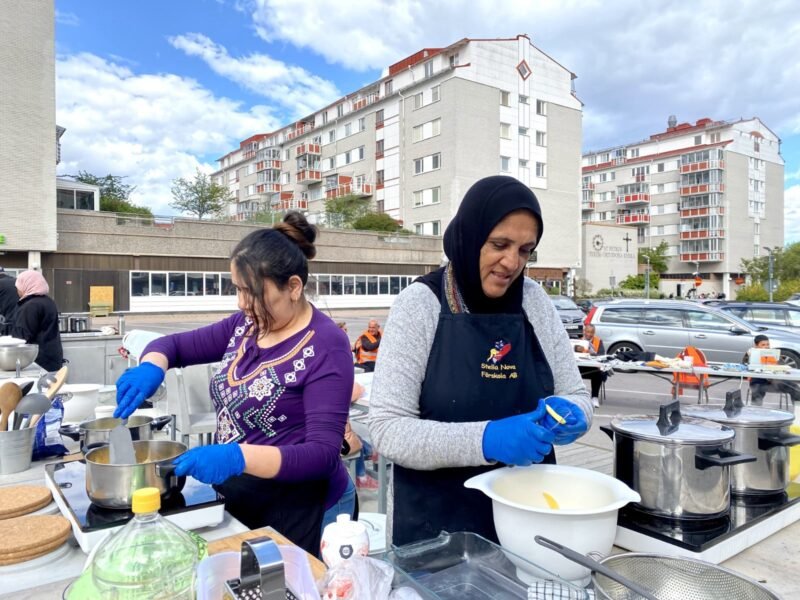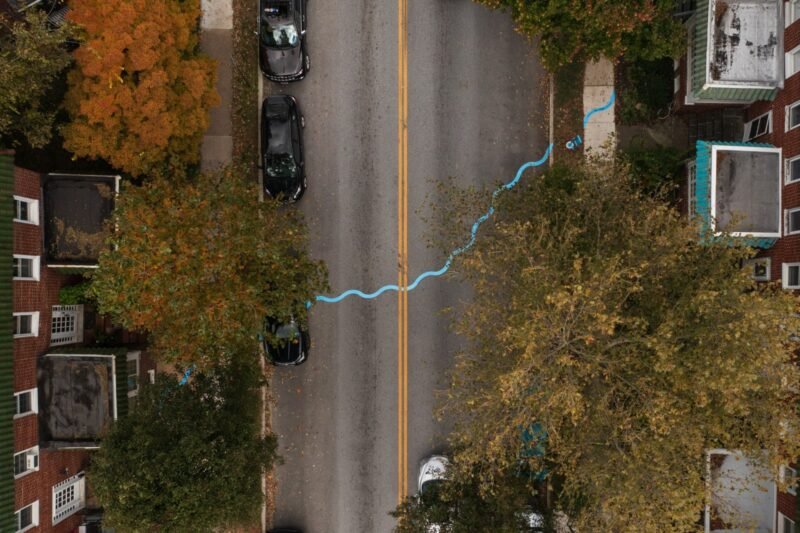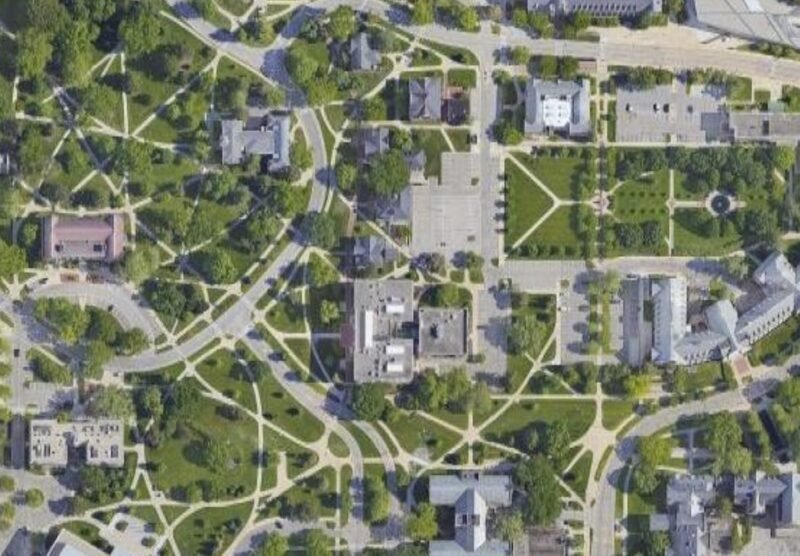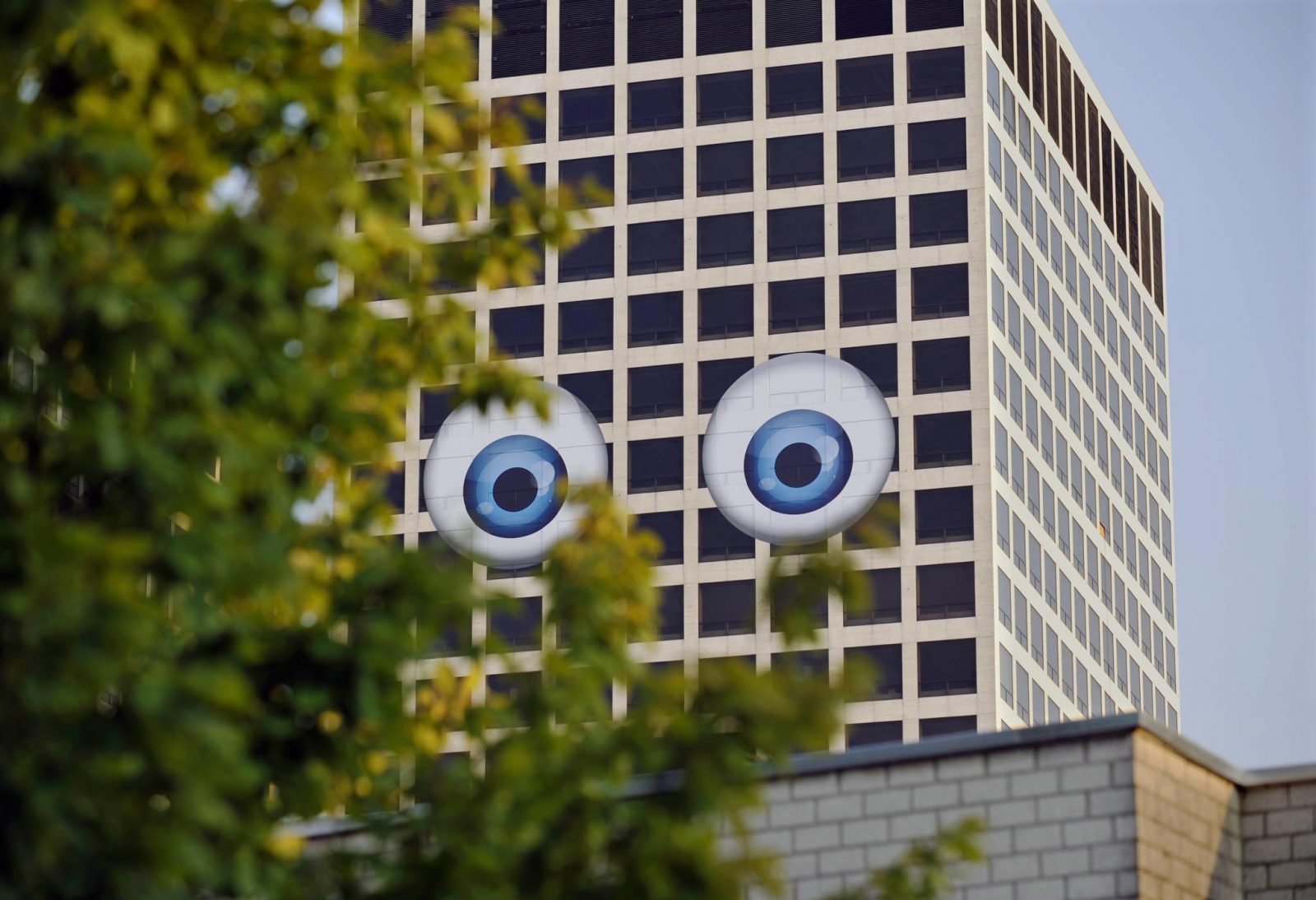Re-Imagining The Street
In many regards the suggestion that we need to reorganize the inner cities to allow for self-driving vehicles seems more a continuation of the past than an anticipation of a positive future.
How would we live, work, and move around in a city without fossil fuels? Pop-Up City and the Urban Futures Studio present the Post-Fossil City Contest. Submit your vision before February 24th and win €10,000! Please visit postfossil.city for more information.
1.
Some days ago, my eye fell on a simple drawing of a streetscape. While flipping through my twitter timeline I was confronted with an alternative way of depicting something as common as a street. It took me a moment to realize what I was seeing. It showed our streets from the perspective of pedestrians, highlighting some details, radically leaving out others. More in particular it highlighted the risks pedestrians face. Pavements looked like mountain rims, on the edges of ravines. A little boy is seeing something and wants to run after it. He would fall off the rim, but for the mother who is holding his hand. There is a man crossing. While he should be okay, he is taking a risk stepping on the plank crossing the ravine.

Artist unknown
The drawing, as simple as it was, highlights the peculiar way in which we have organized our streets. The car determines the space, pedestrians are pushed back to the ridges. It is not a new theme, of course. Jane Jacobs famously wrote about the ‘pavement ballet’ in Death and Life of Great American Cities when she fought to protect the quality of the streets of the Village against Robert Moses, the master planner of New York. Yet the simplicity of the drawing is effective in bringing the absurdity of the present. Why is there such a radical unevenness in the way in which we move through our cities?
The drawing, simple as it is, helps re-imagining our urban futures. If the future of mobility takes us beyond the combustion engine, if mobility increasingly becomes a service, less a matter of ownership, and, if, perhaps, we will also more often see self-driving vehicles, then we can really rethink our streets. They become a space of potential, open for all sorts of alternative usage.
2.
Streets are social spaces. Its usage changes with the way in which we organize mobility. The streets of old town of Hanoi are still dominated by motor bikes not by cars. While they can be a hazard in themselves, they still allow for an active usage of the pavements. Women sell fresh vegetables and people buy meat, ready for consumption that day. The fact that there are no cars parked at the curb leaves space for informal markets and entrepreneurship.

Hanoi. Photo: Maarten Hajer
But what will happen when the middle classes earn enough to swap their bikes for cars? Seeing the quality of the street as public domain is a first step to avoid loosing this diversity of usage.
In African cities streets are often still to be constructed, again leaving ample space for a diversity of usage. The tarmac is for cars, but besides it there are market catering for the local population. Cities like Nairobi grow fiercely. Shopping malls are under construction wherever you look. Yet at the roads leading into the city vendors still find the place to sell their regional products directly to consumers, and at prices that people can afford.

Nairobi. Photo: Maarten Hajer
3.
Where are we heading? What qualities do we want the streets of our future cities to have? Do the cities of the global South first have to go through the modernist restructuring, eradicating the local dynamism in favor of self contained malls, with streets merely functioning for transport from one enclave to the next?
What ideals, what new possibilities can help us get there? Some are captured by the possibilities of new ICT. The idea then is that investing in ‘smart’ technology is the obvious next thing. But here there are at least two questions that need to be answered first. Why, again, was this a good idea? What ideal of urban life is brought closer by enhancing the smartness of cities and streets? And secondly, as authors like Anthony Townsend keep reminding us, why do we think that the application of all these smart technologies will work smoothly and really make for better cities? We all complain about hiccups in our computer networks in the office, we all reset our laptops from time to time. Why is it that we trust our streets, our traffic to be given over to new tech?
I recently saw a clip, called Rush Hour, that, full of irony, puts images to my doubts.
I am sure that traffic on the motorways between our cities will soon predominantly run by automated vehicles. Yet the complexity of inner cities, are not so easily mastered by an algorithm. And I am not sure that is the best possible future for our city life either. In many regards the suggestion that we need to reorganize the inner cities to allow for self-driving vehicles seems more a continuation of the past than an anticipation of a positive future.
How would we live, work, and move around in a city without fossil fuels? Pop-Up City and the Urban Futures Studio present the Post-Fossil City Contest. Submit your vision before February 24th and win €10,000! Please visit postfossil.city for more information.



